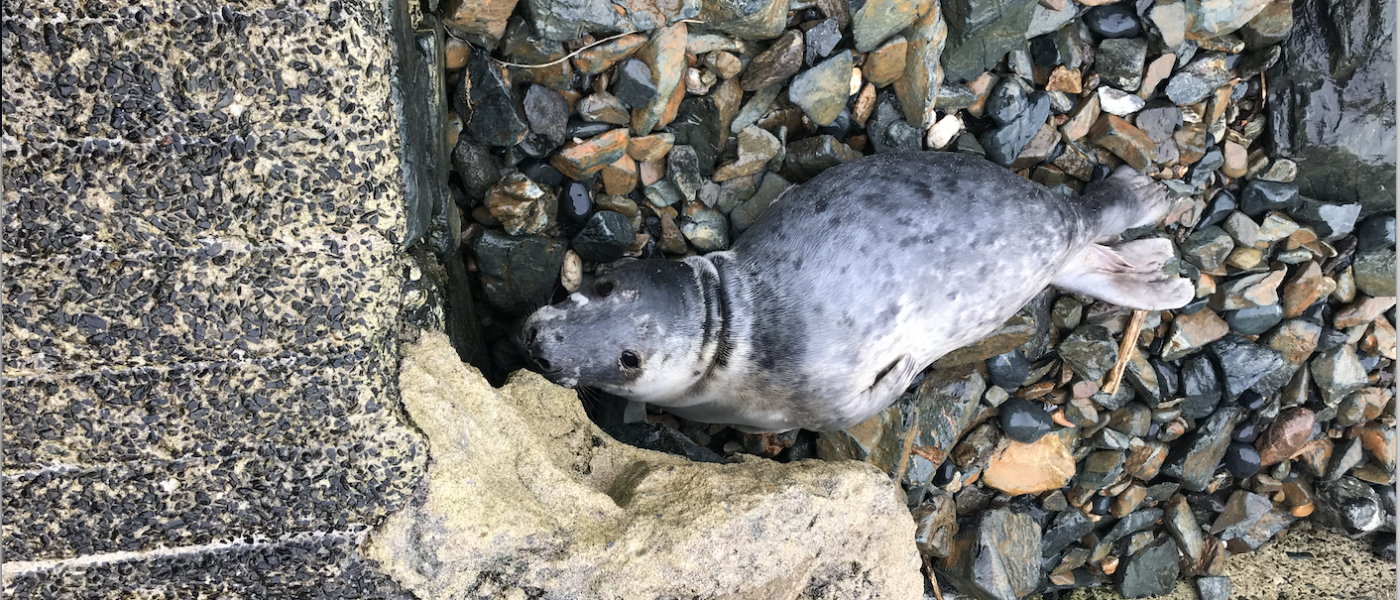Seal Strandings
Here is a sight you may have encountered when walking a local beach. This seal is alive but well up the beach beyond the tideline. On finding a ‘stranded’ seal you may wonder if there is anything you should do to ‘help’, or if there is someone you should contact about the animal on the beach.
Below, I have copied the information provided on the website of British Divers Marine Life Rescue – the body who respond to calls about creatures stranded or in distress around our coastline. This explains a few checks you can make visually to assess the situation from a distance, and also gives their helpline phone number if you feel you should call and alert them to the situation. Remember the advice below and put this number in your phone in case you need to make that call.
01825 765546
If you find a seal on a beach, watch it from a distance. Do not approach the animal. Seals regularly haul out on our coasts – it is part of their normal behaviour and, in fact, they spend more time out of the water, digesting their food and resting than in it. Therefore, finding a seal on the beach does not mean there is necessarily a problem and do not chase it into the sea as this may stop it from doing what it needs to do – rest. A healthy seal should be left alone.
Do not approach a seal, or allow children or dogs near it. Seals are wild animals and although they look cute, they will defend themselves aggressively if necessary.
After stormy weather and / or high tides, seals will haul out on beaches to rest and regain their strength. Many do not need first aid, but we will always try to find someone to check them out just in case.
However, if there is a problem, there are a number of things you may see:
- Abandoned: If you see a seal with a white, long-haired coat in the autumn/winter, or you see a small seal (less than a metre (three feet) in length) alone between June and August, then it is probably still suckling from its mother. Check the sea regularly for any sign of an adult seal.
- Thin: Signs of malnutrition include visible ribs, hips and neck and perhaps a rather baggy, wrinkled skin.
- Sick: Signs of ill health include: coughing, sneezing or noisy, rapid breathing and possibly thick mucus coming from the nose, wounds or swellings, particularly on flippers, cloudy eyes, or thick mucus around them, or possibly one eye kept closed most of the time. A seal showing little response to any disturbance going on around it (although remember they could be soundly asleep) could also be a sign of ill health.
- Entanglement: Seals are susceptible to being entangled in fishing gear and other debris. heavy commercial gear will be obvious, but monofilament nets and line is hard to see, but could be caught around the neck, flippers and body. Sometimes seals can have nasty wounds due to fishing gear and marine debris cutting into their bodies.
If you see a seal that may be abandoned, thin, ill or injured, then call for advice and assistance:
BDMLR RESCUE HOTLINE:
01825 765546 (24hr)

